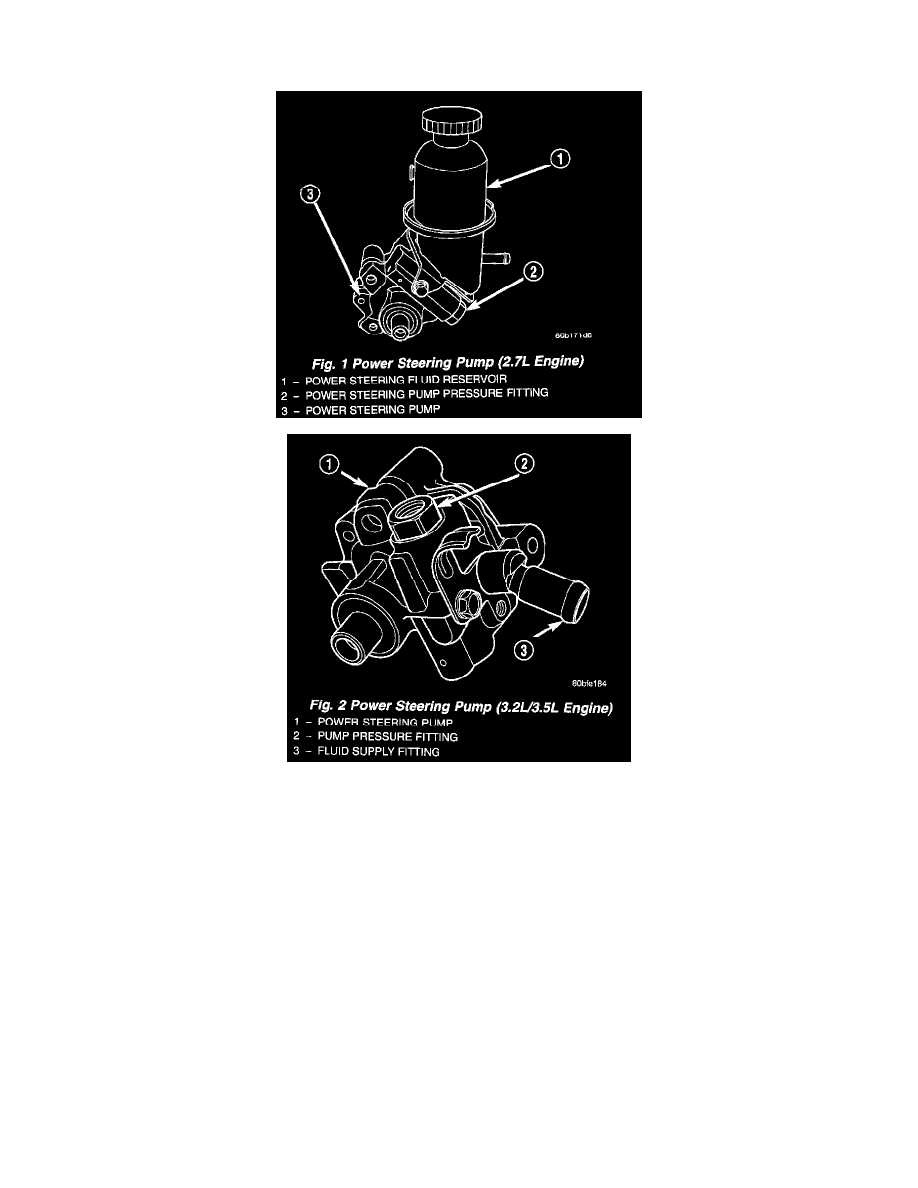Concorde V6-3.2L VIN J (2000)

Power Steering Pump: Description and Operation
DESCRIPTION
Hydraulic pressure for the operation of the power steering system is provided by a belt driven rotary power steering pump. The power steering pump
is a constant flow rate and displacement vane type pump. Vehicles equipped with the 2.7 liter engine use a power steering pump that has an integral
reservoir for the power steering fluid. Vehicles equipped with the 3.2 liter or 3.5 liter engine use a power steering pump that has a remotely mounted
reservoir for the power steering fluid.
Both power steering pumps mount to the front of the engine on the driver's side.
The service procedures for the power steering pump are limited to the areas and components listed below.
-
Power steering fluid reservoirs, related components and attaching hardware.
-
Power steering pump pulley.
No repair procedures are to be done on the internal components of the power steering pump. Repair of a power steering fluid leak from any area of the
power steering pump is not allowed.
OPERATION
The Power steering pump operates as follows. A belt driven pulley turns a shaft which drives a rotor. Rectangular pumping vanes carried by the shaft
driven rotor move the fluid from the intake to the cam ring pressure cavities. As the rotor begins to turn, centrifugal force throws the vanes against the
inside surface of the cam ring to pickup residual oil. This oil is then forced into the high pressure area. As more oil is picked up by the vanes, the
additional oil is forced into the cavities of the thrust plate through two crossover holes in the cam ring and pressure plate. The crossover holes empty
into the high pressure area between the pressure plate and the housing end cover.
When the high pressure area of the power steering pump is filled with power steering fluid, the fluid flows under the vanes in the rotor slots, forcing
the vanes to follow the inside oval surface of the cam ring. As the vanes reach the restricted area of the cam ring, oil is forced out from between the
vanes. When excess oil flow is generated during high-speed operation, a regulated amount of oil returns to the pump intake side through a flow control
valve. The flow control valve reduces the power required to drive the pump and holds down temperature buildup.
When steering conditions exceed maximum pressure requirements, such as turning the wheels against the stops, the pressure built up in the steering
